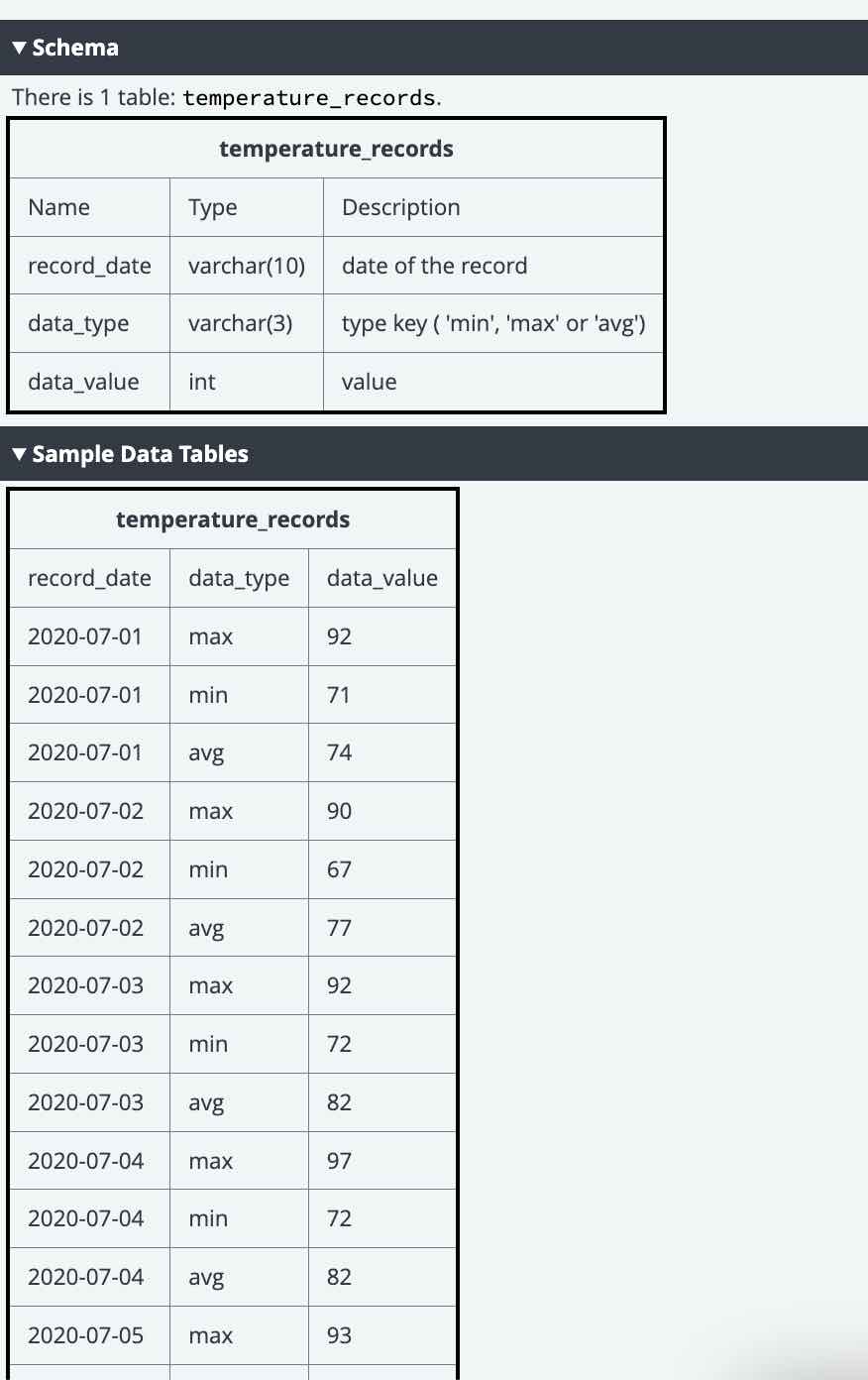SQL Query Samples Weather Report
Weather Report
Solution (explanation in comments)
SET NOCOUNT ON;
with m(m,v) as (
select
datepart(month, record_date),
max(data_value)
from temperature_records
where data_type = "max"
group by datepart(month, record_date)
),
mi(m,v) as(
select
datepart(month, record_date),
min(data_value)
from temperature_records
where data_type = "min"
group by datepart(month, record_date)
),
a(m, v) as(
select
datepart(month, record_date),
-- as the requirement is to round the result to integer,
-- so first cast integer to float for percisely calculate the average temperature
-- then round to integer
-- then use cast as numeric(4, 0) to remove the trailing decimals.
cast(round(avg(cast(data_value as numeric(10,5))),0) as numeric(4,0)) -- datatype convert, date function
from temperature_records
where data_type = "avg"
group by datepart(month, record_date) -- aggregation
)
select
*,
(select v from mi where mi.m = m.m), -- subquery
(select v from a where a.m = m.m)
from m
goChallenge description:

Scheme and sample data

Expected output
| Month | Max | Min | Avg |
|---|---|---|---|
| 7 | 110 | 80 | 90 |
| 8 | * | * | * |
| 9 | * | * | * |
| 10 | * | * | * |
| 11 | * | * | * |
| 12 | * | * | * |
Summary:
The key part is to figure out the max temperature of the month is not the average of the max temperatures of days. It is the max of them.
Get max, avg, min temperature of the months, and use subquery or join to gather them together.
Links:
Link to the challenge on HackerRank